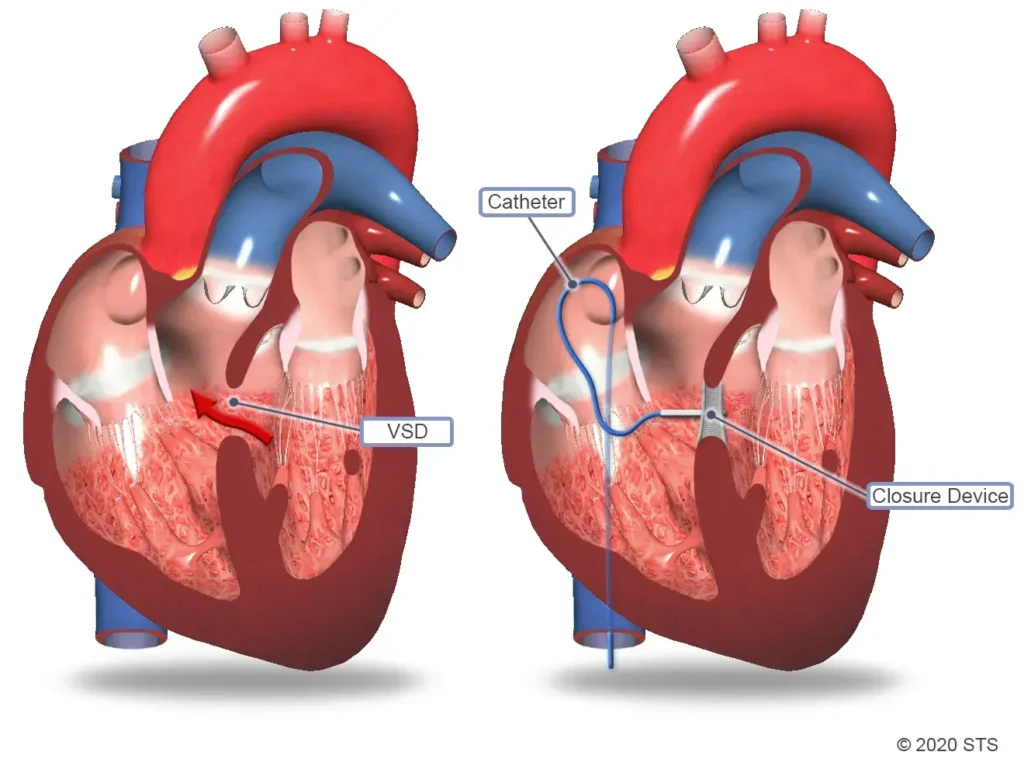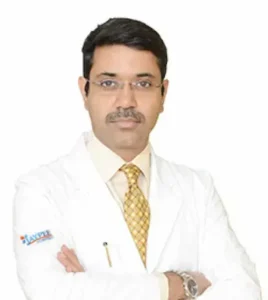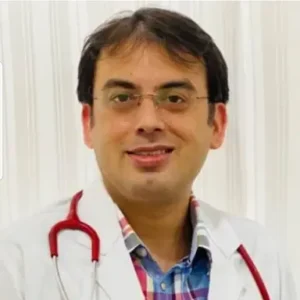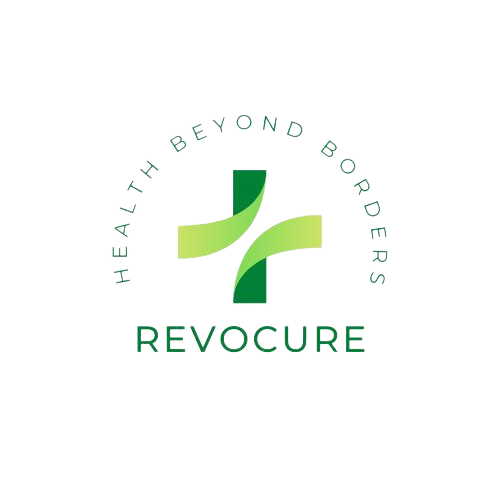Ventricular Septal Defect (VSD) is a congenital heart condition characterized by one or more holes in the ventricular septum, the wall that separates the lower chambers (ventricles) of the heart. VSD is one of the most common congenital heart defects detected at birth, but it can also be diagnosed later in life.
Understanding VSD
The ventricular septum is crucial for preventing the mixing of oxygen-rich blood from the left ventricle with oxygen-poor blood from the right ventricle. A defect in this septum allows blood to flow from the left to the right ventricle, which can lead to increased pressure in the lungs and reduced efficiency of the heart’s pumping function.
Types of VSD
VSDs are classified based on their location within the ventricular septum:
Perimembranous VSD: The most common type, located in the upper part of the septum near the tricuspid and aortic valves.
Muscular VSD: Found in the lower portion of the septum, these defects can be multiple and may close spontaneously over time.
Inlet VSD: Occurs near the valves that channel blood into the ventricles.
Outlet VSD: Situated near the valves that direct blood out of the ventricles.
Symptoms
The seriousness of the indications depends on the estimate of the imperfection and the sum of blood shunted from cleared out to right. Little VSDs may cause no indications and can near suddenly, whereas bigger abandons might lead to:, Shortness of breath, Weariness, Visit respiratory contaminations, Destitute development and nourishing in newborn children
Diagnosis
VSD is usually found out using an echocardiogram, which gives clear pictures of how the heart looks and works. Other tools to check your heart might be ECGs, chest X-rays, or heart MRIs.
Treatment
The treatment for VSD (a hole in the heart) depends on how big the hole is, where it is, and what problems it causes. Small VSDs usually don’t need treatment and can sometimes heal on their own. Medium to large VSDs may need surgery to avoid serious problems like high blood pressure in the lungs or heart failure. This usually means closing the hole during open-heart surgery. For some cases, doctors can use a special tool to close the hole without doing open surgery. After the surgery, kids often get better quickly and can live a normal life without many restrictions. It is important to keep seeing a heart doctor to check on heart health and catch any long-term problems. In summary, VSD is a serious condition, but with the right care, it often has a good outcome. Better testing methods and treatment choices are helping people get better.




